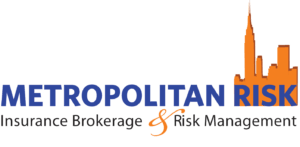 Whether you are a business owner, CFO, or the lead operational muckety-muck, you get a pit in your stomach when it’s time to renew your company’s insurance program—a common theme we have heard in 20-plus years consulting with businesses of all shapes and sizes. This occurs primarily because of the failure to invest the required upfront time to have a solid system in place that addresses and manages the two most important variables: the true total cost of risk of company’s financing and the program design.
Whether you are a business owner, CFO, or the lead operational muckety-muck, you get a pit in your stomach when it’s time to renew your company’s insurance program—a common theme we have heard in 20-plus years consulting with businesses of all shapes and sizes. This occurs primarily because of the failure to invest the required upfront time to have a solid system in place that addresses and manages the two most important variables: the true total cost of risk of company’s financing and the program design.
True Total Cost of Risk:
I have yet to walk into a middle-market business (under $250 million a year in sales) where they truly understand their “cost of risk financing.” Invariably, the conversation starts with “This is how much we pay in insurance premiums, and this is our current coverage. What can you do?” They may have it nicely compiled in a spreadsheet, but they sit back and wait for me to tell them whether we can save them money on their insurance premiums. The only way these folks evaluate how well the organization is doing year to year on this one cost component is how much they are paying for their insurance premiums. Some even break it down as a percentage of gross sales, which is better than evaluating the purchase on a pure premium-cost basis. Sound familiar? Keep reading.
We politely suggest this is a huge mistake. Firstly, the price you pay on your insurance program is a direct function of how well your individual company manages its own claims and losses. Thus, if your company has had a recent spate of employee injuries, automobile losses, or accidents that evolve into litigation, these events will be a significant cost driver going forward—for five years to be exact.
Secondly, insurance premiums are a trailing indicator: they reset only once a year in most cases. Your losses and claims, especially with respect to liability and workers’ comp, develop over time (usually worsen), sometimes significantly between policy periods, without your knowledge. Unless you have a process in place to monitor these numbers monthly or quarterly, you are at risk for huge swings in your insurance premiums year over year, outside your budgeting process. The key takeaway here is that you cannot simply look at insurance premiums and know whether you have a cost-effective program, because it’s a false number and it’s a latent indicator.
Further, most of your variable costs relating to risk are outside the cost of insurance premiums. An actuary friend of ours based in Tennessee, Tim Coomer of Sigma Actuarial, said that “80 percent of a business’s true risk costs are outside the cost of the insurance policies.” Tim, we concur, as that has been our experience. The challenge for most CFOs is that they have not identified the other risk costs. They have not built a formula to incorporate the year-to-year impact of those risk costs on the business, which is critically important to the data becoming insightful and actionable, thereby improving outcomes and driving cost efficiency. Without this data, CFOs can’t set goals and measure their organizations’ safety performance, which is a huge cost driver. How can you evaluate the effectiveness of your current risk program (which includes insurance premiums) when you are missing 80 percent of the cost variables, and how do you set goals to measure your progress?
Puzzled? At least you’re still reading, but you’re not convinced. We get that look a lot, especially from CFOs. Let’s give you a real-life example to help illustrate the point. We have a construction client who we brought through our evaluation process. We evaluated all of its insurance purchases in a given fiscal year. When we started the process, the client’s own internal assessment concluded that it did very well on insurance renewals, so we put it through our test. It turned out that the client’s program was worse than the prior year, and it was susceptible to a huge future increase if the program’s losses deteriorated any further. Lastly, the client had no idea what its true cost structure was.
Yes, the client’s insurance spending was less than it was in the prior year, but why? The evaluation revealed that the client was not properly accounting for cost factors that were risk and insurance related, which should have been allocated to its risk program—deductibles, payments to attorneys for uncovered litigation, fines, and increases in the workers’ comp experience modification factor, among others that were indirect cost components. The client knew claims impacted its cost but had no way to measure that. Further, the client did not account for and measure these indirect costs year over year to benchmark the effectiveness of its risk-financing program. Notice I used the term “risk financing” instead of insurance premiums. Insurance premiums are simply a cost component, but risk financing measures a group of variables that ultimately drive financial performance on your profit and loss statement (P&L).
Smart CFOs and business owners are not just trying to reduce a cost component (insurance premiums). They are trying to drive financial performance as measured by their P&Ls. Their goal is points on the profit margin, not simply one cost component. By looking at the broader picture, risk financing, which incorporates many other cost variables, gives a much more strategically oriented picture than simply looking at insurance premiums as the basis for how effectively your organization manages risk. Those that effectively manage their risks and their risk-related costs enjoy a huge competitive advantage in their unit cost structures, as they compete on the street with those businesses that just shop their insurance premiums year over year. That is the ultimate goal—not simply reducing insurance costs.
Look for Part II of this article in which I will detail the second huge mistake business owners and CFOs make.








